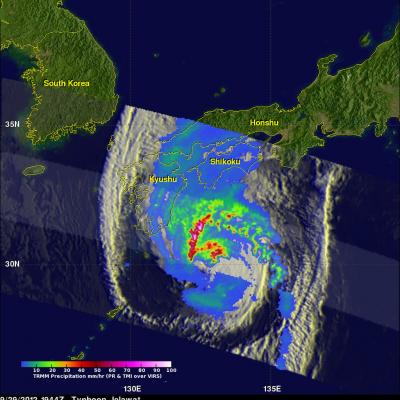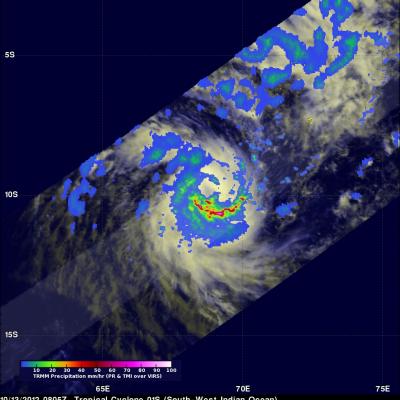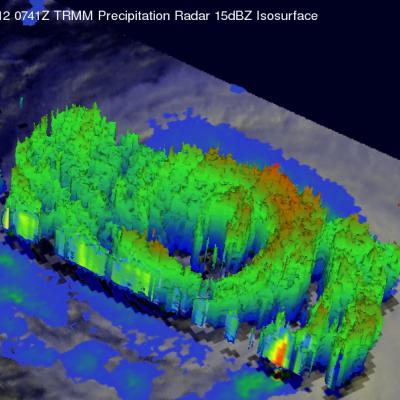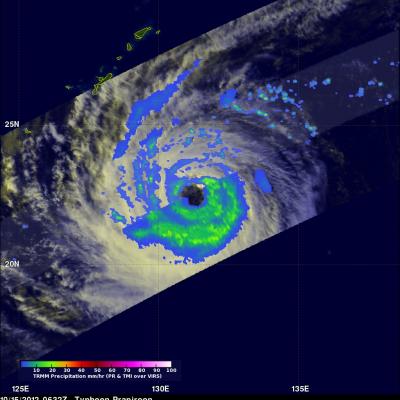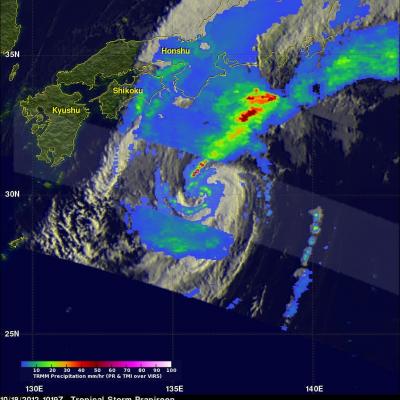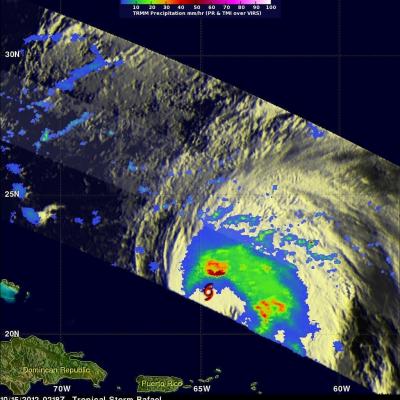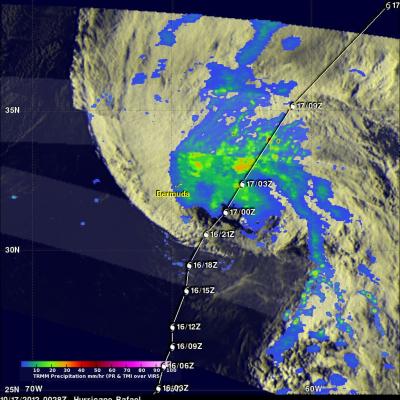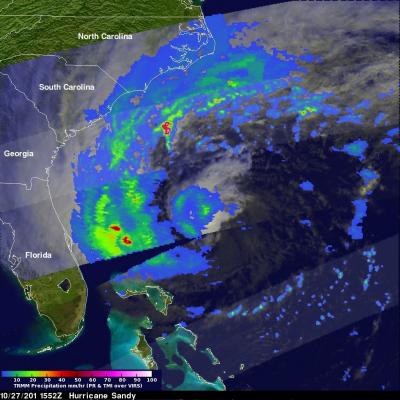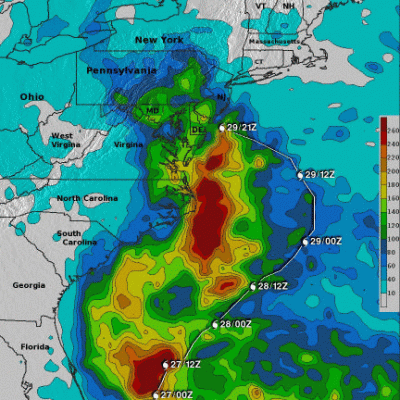Typhoon Jewalat Batters Japan
The TRMM satellite had an excellent look at typhoon Jelawat on September 29, 2012 at 1944 UTC. Jelawat had already battered Okinawa with 75kt (~87mph) winds and was headed for the main islands of Japan. An analysis of rainfall from TRMM's Microwave Imager (TMI) and Precipitation Radar (PR) instruments is shown overlaid on an enhanced infrared image from TRMM's Visible and InfraRed Scanner (VIRS). Rain is shown falling at a rate of over 90mm/hr (~3.5 inches) in strong feeder bands northwest of Jelawat's center of circulation. Jelawat was already causing light to moderate rainfall on the


